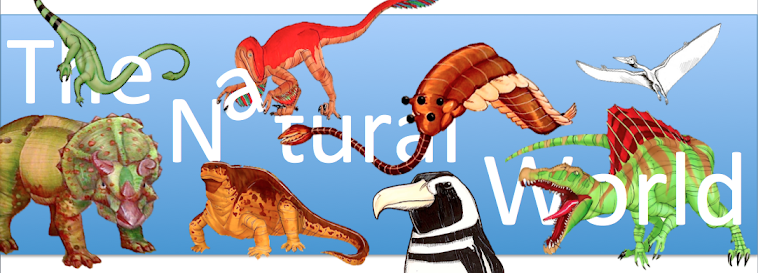4. With nearly a ten foot wingspan, the California condor is the largest flying bird in North America! (If you're having trouble visualizing ten feet, either go purchase ten one-foot long rulers and lay them end to end or, more simply, go find a good-sized California condor and stretch out its wings. That's probably the best visual right there.) The California condor is unfortunately labeled "Critically Endangered" by the IUCN, and it has experienced a pretty good comeback, and hopefully will continue to do so well into the future! According to the IUCN website, the last six remaining wild individuals were brought into captivity for captive breeding purposes, making the species "Extinct in the Wild." However, due to intense involvement from scientists, the species is on the rise, with around 213 individuals in the wild!
3. Meet the only fossil vulture on our Top Ten list, Phasmagyps! Some paleontologists are unsure whether Phasmagyps is actually a vulture, and this uncertainty is definitely understandable, as Phasmagyps is known from but a single bone! If it is a vulture, then Phasmagyps might be the oldest known New World vulture! Discovered in a Colorado quarry containing a number of fossils belonging to a 35 million year old rhinoceros called Trigonias, this single bone is now housed in the collections facility of the University of Colorado Boulder! I'm not really sure what I'm doing yet, but I've tried to input a request to check out the bone, we'll see how that goes!
2. Meet the Andean condor, one of the largest flying birds alive today, with more than a ten foot wingspan! With an incredible lifespan of over 75 years in captivity, the Andean condor, much like most animals that live for a very long time, does not reproduce very quickly: and therein lies its vulnerability. If, say, half of the population of Andean condors was shot in one year by humans, then it would take much longer for the population density to regain its former glory. By contrast, if you destroy half of the population of, say, rats, then they would almost certainly regain their former numbers very quickly, as they reproduce at an alarmingly fast rate. (The same principle applies to the California condor, who we talked about above.) Fortunately, the Andean condor is nowhere near as vulnerable to extinction as its close relative, the California condor.
1. At last, we come to my most favorite vulture of all time: the king vulture! This guy is absolutely ridiculous looking, resembling a cross between a vulture, a turkey, and who knows what else! It also has a very fun scientific name: Sarcoramphus papa! Don't exactly know what it means, but I like to think it has something to do with being the Vulture Daddy. I found on some sources online that the blood and feathers of the king vulture were used by the ancient Mayans to help cure disease, but I couldn't find any more information on that: all I found was the exact same sentence copied over and over again: "The bird's blood and feathers were also used to cure diseases." An enigmatic sentence for a very engimatic looking bird. But let's face it: it just looks awesome.
Thanks again for joining us today! I do hope I have made you more aware of vultures of an international level! But seriously, check out their page: http://www.vultureday.org/2013/index.php








Thanks great blog posst
ReplyDelete